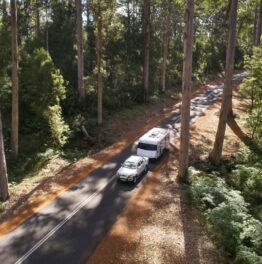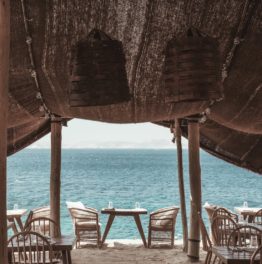Luxury Travel Magazine Main Feature
Autumn 2020
Set in one of the most breathtaking yet little-known locations in Indonesia, Bawah Reserve is the pinnacle of hidden treasure
“More coffee?” “No thanks, I’ll take some more juice, though, and another warm muffin… and maybe some more fruit salad, and…”
They say you should eat breakfast like a king, and we’re certainly doing that today, but not in the way you might think. Our location is a secret squirrel of a beach in the Anambas Islands in Indonesia, and to say the spread and scenery are a step-up from our usual breakfast setting would be an understatement. This is not your regular beach picnic, either, because it has been organised by Bawah Reserve, and nothing Bawah puts on is ever regular.
We were brought here by speedboat at 8:30am expecting a few beach towels and a picnic basket with a handful of snacks. An umbrella, perhaps. Instead, we arrived to a large Balinese-style balé, set back from the beach in the shade of the trees, with wood- panelled floors and inviting furnishings including floor lounges, cushions, a table and leather chairs for two. We then watched in amazement, feeling slightly foolish, as the Bawah staff unpacked endless edible morsels for us to break our fast in the most memorable of ways. That’ll show us for underestimating one of the most coveted island resorts in Indonesia.
The small, very pretty Turtle Bay we’ve landed on is just one of 13 sandy havens across six islands – all private – that guests have access to at Bawah Reserve. Romantically remote at 300 kilometres northeast of Singapore, it’s not an easy place to get to – the journey involves an international ferry followed by a 90-minute seaplane – but when you arrive, boy do you arrive.
The bird’s-eye view of the main island on the descent is of lush tropical jungle and an azure- blue ocean that gently changes hue as it heads towards reef-speckled lagoons and onto powdery white beaches. From the dizzying heights of the sea plane, the resort’s beach villas look like little matchboxes lined up on the sand, while the main buildings are hardly noticeable at all, their curved, thatched roofs hesitantly pushing through the trees like the caps of ginormous exotic mushrooms.







